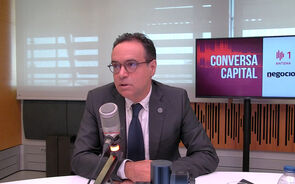13:30 - Dados States
1 Mensagem
|Página 1 de 1
13:30 - Dados States
8:30am 09/14/04 U.S. RETAIL SALES UP 4.9% YEAR-OVER-YEAR
8:30am 09/14/04 U.S. AUG. RETAIL SALES DOWN 0.3% VS. -0.1% EXPECTED
8:30am 09/14/04 U.S. AUG. RETAIL SALES EX-AUTOS UP 0.2% AS EXPECTED
8:30am 09/14/04 U.S. JULY RETAIL SALES REVISED TO 0.8% GAIN FROM 0.7%
8:30am 09/14/04 U.S. Q2 CURRENT ACCOUNT DEFICIT RECORD $166.2 BILLION
8:30am 09/14/04 U.S. Q2 CURRENT ACCOUNT DEFICIT RECORD 5.7% OF GDP
8:30am 09/14/04 U.S. Q2 NET CAPITAL INFLOWS $146.8B VS. $138.6B
8:30am 09/14/04 U.S. AUG. GENERAL MERCHANDISE STORE SALES DOWN 0.4%
ECONOMIC REPORT: U.S. Aug. retail sales fall 0.3%
By Rex Nutting, CBS.MarketWatch.com Last Update: 8:31 AM ET Sept. 14, 2004
WASHINGTON (CBS.MW) - Retail sales in the United States fell 0.3 percent in August, the third decline in the past five months, the Commerce Department estimated Tuesday.
Auto sales dropped 1.9 percent, more than accounting for the decline. Excluding autos, sales rose 0.2 percent.
Economists were expecting a smaller decline of 0.1 percent for total sales, but the figure was close to expectations considering the upward revision in July from 0.7 percent to 0.8 percent. The gain in ex-auto sales was as expected.
Sales were up 4.9 percent in the past year. Sales in the past three months increased 0.4 percent from the prior three months. The figures are not adjusted for price changes.
The figures show a mixed picture for consumer spending as the summer ended. Some retailers had blamed their poor performance on the weather and on a late Labor Day holiday.
The Federal Reserve had termed August sales as "lackluster" in last week's Beige Book report.
The decline isn't likely to deter the Fed from raising rates for the third meeting in a row at the Sept. 21 gathering.
Fed officials have said rates remain too low and argued that the summer slump was merely a temporary soft patch in economic activity.
The weakest performance in August was in autos, where sales in dollar terms fell 1.9 percent. Auto sales were down 1.8 percent in the past year, despite (or perhaps because of) the best efforts of the automakers to slash prices.
Chain store sales were mixed. General merchandise store sales fell 0.4 percent. Clothing store sales dropped 1.4 percent.
There was strength elsewhere. Health and personal care store sales gained 1 percent, while leisure-time stores such as music and sporting goods increased 1.4 percent.
Durables were also mixed. Furniture store sales sank 0.9 percent. Electronics and appliance store sales inched ahead 0.1 percent.
Building materials and hardware sales increased 0.4 percent.
Gasoline station sales rose 0.3 percent, despite a decline in prices.
Restaurant and bar sales fell 0.3 percent. Food store sales increased 0.6 percent.
In a separate report, the Commerce Department said the U.S. current account deficit widened to a record $166.2 billion in the second quarter on a record trade deficit and an increase in net capital inflows.
ECONOMIC REPORT: U.S. current account deficit record $166B
By Rex Nutting, CBS.MarketWatch.com Last Update: 8:31 AM ET Sept. 14, 2004
WASHINGTON (CBS.MW) - The U.S. current account deficit widened to a record $166.2 billion in the second quarter from $147.2 billion in the first quarter, the Commerce Department estimated Tuesday.
The deficit increased to a record 5.7 percent of gross domestic product during the quarter.
The current account deficit is the broadest measure of the nation's economic balance sheet with the rest of the world. It encompasses both trade and capital flows.
Most economists believe the current account deficit is unsustainably high and must be adjusted eventually, either through an abrupt change in currency values or change in U.S. savings behavior.
The deficit on trade of goods and services increased to a record $150.3 billion from $138.6 billion in the first quarter.
Net capital flows into the United States increased to $146.8 billion in the second quarter from $138.6 billion in the first quarter.
Flows of capital in and out of the United States slowed in the quarter. Foreign capital inflows slowed to $265.2 billion from $445.3 billion in the first quarter. However, U.S. acquisitions of foreign assets slowed even more, sinking to $118.5 billion from $306.7 billion.
Foreign purchases of U.S. equities fell to $2 billion from $4.2 billion. Purchases of U.S. Treasurys dropped to $35.6 billion from $65.4 billion while purchases of corporate bonds increased to $51.5 billion from $51.2 billion. Purchases of agency bonds rose to $35.1 billion from $6.7 billion.
Foreign official assets (of central banks) increased $73.9 billion compared with an increase to $127.9 billion in the first quarter.
The increase in foreign direct investment in the United States rose to $32.7 billion from $10.2 billion.
In a separate report, the Commerce Department estimated U.S. retail sales fell 0.3 percent in August as auto sales fell 1.9 percent. Excluding autos, sales rose 0.2 percent.
8:30am 09/14/04 U.S. AUG. RETAIL SALES DOWN 0.3% VS. -0.1% EXPECTED
8:30am 09/14/04 U.S. AUG. RETAIL SALES EX-AUTOS UP 0.2% AS EXPECTED
8:30am 09/14/04 U.S. JULY RETAIL SALES REVISED TO 0.8% GAIN FROM 0.7%
8:30am 09/14/04 U.S. Q2 CURRENT ACCOUNT DEFICIT RECORD $166.2 BILLION
8:30am 09/14/04 U.S. Q2 CURRENT ACCOUNT DEFICIT RECORD 5.7% OF GDP
8:30am 09/14/04 U.S. Q2 NET CAPITAL INFLOWS $146.8B VS. $138.6B
8:30am 09/14/04 U.S. AUG. GENERAL MERCHANDISE STORE SALES DOWN 0.4%
ECONOMIC REPORT: U.S. Aug. retail sales fall 0.3%
By Rex Nutting, CBS.MarketWatch.com Last Update: 8:31 AM ET Sept. 14, 2004
WASHINGTON (CBS.MW) - Retail sales in the United States fell 0.3 percent in August, the third decline in the past five months, the Commerce Department estimated Tuesday.
Auto sales dropped 1.9 percent, more than accounting for the decline. Excluding autos, sales rose 0.2 percent.
Economists were expecting a smaller decline of 0.1 percent for total sales, but the figure was close to expectations considering the upward revision in July from 0.7 percent to 0.8 percent. The gain in ex-auto sales was as expected.
Sales were up 4.9 percent in the past year. Sales in the past three months increased 0.4 percent from the prior three months. The figures are not adjusted for price changes.
The figures show a mixed picture for consumer spending as the summer ended. Some retailers had blamed their poor performance on the weather and on a late Labor Day holiday.
The Federal Reserve had termed August sales as "lackluster" in last week's Beige Book report.
The decline isn't likely to deter the Fed from raising rates for the third meeting in a row at the Sept. 21 gathering.
Fed officials have said rates remain too low and argued that the summer slump was merely a temporary soft patch in economic activity.
The weakest performance in August was in autos, where sales in dollar terms fell 1.9 percent. Auto sales were down 1.8 percent in the past year, despite (or perhaps because of) the best efforts of the automakers to slash prices.
Chain store sales were mixed. General merchandise store sales fell 0.4 percent. Clothing store sales dropped 1.4 percent.
There was strength elsewhere. Health and personal care store sales gained 1 percent, while leisure-time stores such as music and sporting goods increased 1.4 percent.
Durables were also mixed. Furniture store sales sank 0.9 percent. Electronics and appliance store sales inched ahead 0.1 percent.
Building materials and hardware sales increased 0.4 percent.
Gasoline station sales rose 0.3 percent, despite a decline in prices.
Restaurant and bar sales fell 0.3 percent. Food store sales increased 0.6 percent.
In a separate report, the Commerce Department said the U.S. current account deficit widened to a record $166.2 billion in the second quarter on a record trade deficit and an increase in net capital inflows.
ECONOMIC REPORT: U.S. current account deficit record $166B
By Rex Nutting, CBS.MarketWatch.com Last Update: 8:31 AM ET Sept. 14, 2004
WASHINGTON (CBS.MW) - The U.S. current account deficit widened to a record $166.2 billion in the second quarter from $147.2 billion in the first quarter, the Commerce Department estimated Tuesday.
The deficit increased to a record 5.7 percent of gross domestic product during the quarter.
The current account deficit is the broadest measure of the nation's economic balance sheet with the rest of the world. It encompasses both trade and capital flows.
Most economists believe the current account deficit is unsustainably high and must be adjusted eventually, either through an abrupt change in currency values or change in U.S. savings behavior.
The deficit on trade of goods and services increased to a record $150.3 billion from $138.6 billion in the first quarter.
Net capital flows into the United States increased to $146.8 billion in the second quarter from $138.6 billion in the first quarter.
Flows of capital in and out of the United States slowed in the quarter. Foreign capital inflows slowed to $265.2 billion from $445.3 billion in the first quarter. However, U.S. acquisitions of foreign assets slowed even more, sinking to $118.5 billion from $306.7 billion.
Foreign purchases of U.S. equities fell to $2 billion from $4.2 billion. Purchases of U.S. Treasurys dropped to $35.6 billion from $65.4 billion while purchases of corporate bonds increased to $51.5 billion from $51.2 billion. Purchases of agency bonds rose to $35.1 billion from $6.7 billion.
Foreign official assets (of central banks) increased $73.9 billion compared with an increase to $127.9 billion in the first quarter.
The increase in foreign direct investment in the United States rose to $32.7 billion from $10.2 billion.
In a separate report, the Commerce Department estimated U.S. retail sales fell 0.3 percent in August as auto sales fell 1.9 percent. Excluding autos, sales rose 0.2 percent.
-
Info.
1 Mensagem
|Página 1 de 1
Quem está ligado:
Utilizadores a ver este Fórum: Karra e 73 visitantes


